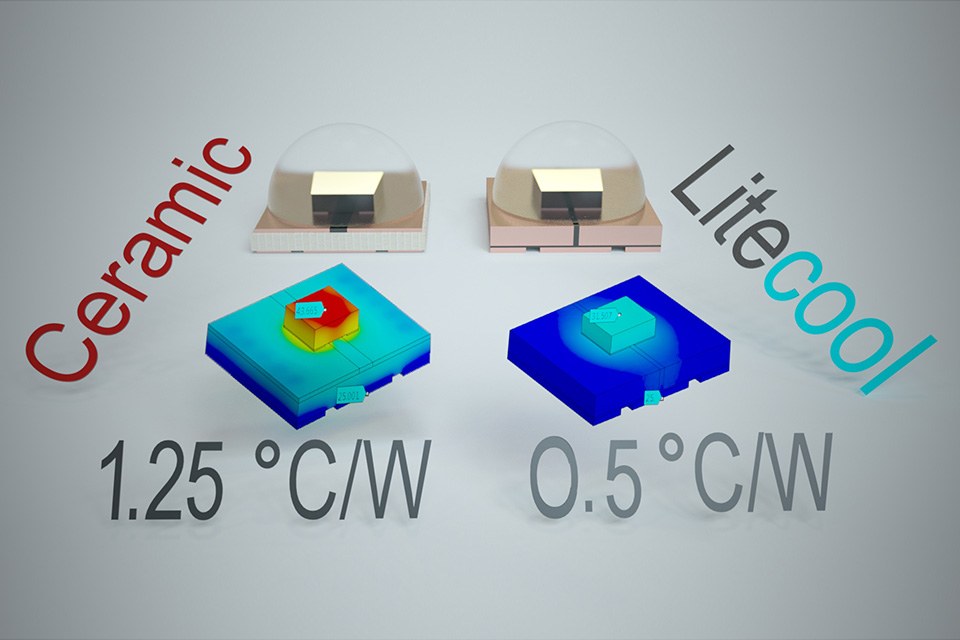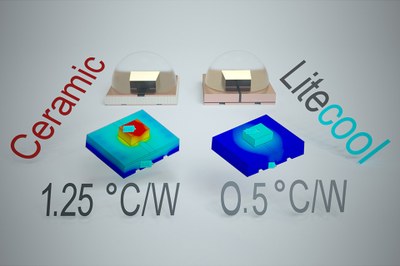Litecool Turns LED Packaging on Its Side
Litecool has produced LED packages in a vertical orientation rather than horizontal. This means that the dielectric layers only have a minor impact on the thermal performance of the LED package and allow the heat to escape more effectively through the metallic parts of the package. This has significant benefits for flip-chip packaging where dielectric layers are usually very close to the diode.
Dielectrics are used within LED packages to isolate electrical tracks but they hinder the thermal path causing the LED to overheat. In the construction of conventional LED packages the electrical tracks and dielectrics are layered horizontally. This means the heat has to pass through one or more low-conductivity dielectric layers causing thermal bottlenecks. By turning this layering by 90 degree the heat can travel down through the copper tracks and not through the dielectric. The thermal resistance [⁰C/W] of packages produced in this way is 3 times lower than conventional packaging. This lower thermal resistance means that heat sinking requirements are vastly reduced and the LEDs can be driven much harder for more light output.
The Vertical Dielectric technology (Patent Pending) allows for close packaging of multiple LEDs within one package with minimal effect on thermal performance as well as significant reductions in the thermal resistance of flip-chip packages. The ‘track and gap’ constraints of traditional electronics manufacture are removed allowing for more flexibility in thermal design.
One of the key commercial benefits is that the dielectrics no longer need to be expensive ceramics with high thermal conductivity. Cheaper polymer based dielectrics can be used as their thermal impact is negated. Litecool has developed designs and manufacturing processes to allow such packages to be manufactured in high volume.
“The location of low thermal conductivity materials is extremely important. The closer they are to the heat source the greater their effect on thermal performance. By changing the orientation of the first dielectric layer it greatly reduces the thermal resistance of the package allowing the heat to flow more easily.” Dr Andrew Young, Sheffield Hallam University.
“It was apparent during design phases of our packages, especially flip-chip packages, that the first layer of dielectric was really impacting on performance. So we flipped it by 90 degrees. This allows for much thicker copper tracks to take the heat laterally away from the LED and reducing the thermal resistance of any subsequent components in the system.” James Reeves, CEO, Litecool.
“It is not a difficult concept to design but it is difficult to manufacture. We have had to develop new manufacturing processes to allow for the unprecedented track and gap ratios required and it has resulted in performance way beyond anything else on the market.” Robert Corbin, Project Engineer, Litecool.
About Litecool:
Litecool (http://www.litecool.co.uk) are leaders in thermally efficient LED packaging and module design. By focusing on thermal performance engineering at package level they have helped lighting OEMs to achieve breakthrough performance in lumen density, weight and reliability enabling a new generation of luminaires which are sleeker, cooler and more cost effective.


